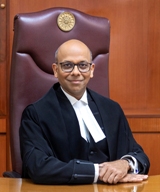“Originally published on 16-May-2012 in livemint in an online column ‘Lawyers Day Out’ by Anish Dayal now Senior Advocate Delhi High Court”
Last fortnight I witnessed a feverish discussion on facebook on how most parents are disappointed with the vacuous and disgusting content on children’s TV channels and whether they were being utopian in yearning for better content. To quote a friend’s comment: “Don’t all parents want healthy entertainment for their kids- with proper language, values and a bit of learning? Didn’t we as kids love quiz programmes, comics, adventure stories? And NONE of us were epitomes of idealism, but ordinary kids. So if all parents want such entertainment and kids would love to be entertained howsoever, how can a venture providing entertainment – but in a proper language, gestures and plot – be unsuccessful as regards money?”
Well said, my friend. Let’s ponder a bit then, shall we?
Are we as an audience in a position to demand a certain quality or nature of entertainment? Is there a right to expect that when we switch on the idiot box we get less or no idiocy out of it? Is there a right to receive certain kind of programmes and not others? The emotive answer may be a yes. But let’s scrape a bit more. We all know that the television is like a retail product no different from buying soap. There are various kinds available on the shelf and it’s up to us to pick what we want. We cannot really complain if the store does not keep our favourite. For that matter our ideal, dream soap has never been manufactured and no one is ready to do so.
Somewhere in that loose comparison lies the truth about television. What we watch generates way more emotion and frenzy, comment and criticism than what we use to wash ourselves every day. But the core of the matter is that no one can be responsible for providing a certain kind of entertainment or a certain quality of content on your television – however annoying that may be. We are part of a large market which works on its own dynamics. If our demands are in a minority then the supplier has to take enough commercial risk to generate content meant for us and our kind. Whether that commercial risk is worth taking, is a question whose answer lies partly with market regulators.
In India the pricing and distribution of television channels is regulated by the Telecom Regulatory Authority of India (TRAI). TRAI, for all kinds of historical reasons has capped the price which channels demand when they make themselves available to your local distributor (cable guy) or through Direct-to-Home (DTH) carriers (like Tata Sky etc). Therefore if this revenue stream (i.e. subscription money) for a channel is frozen the other revenue stream from advertisements is the one channels tend to hang on. Advertisements in turn work on market analysis – who sees what and who likes what. Therefore in the end all demands and hopes for a particular kind of content are really part of how that sticks in the market. If all parents sat up and revolted and said that we will only watch XYZ Kids Channel if it gives us brilliantly produced, clean infotainment then the market will have to tip that way. However this ideal scenario may never be achieved. In many countries there are many options for better content at higher prices. And that may well be the vision for future regulation in India.
Aside from commercial and regulatory reasons, there is a legal aspect tucked away in the concern of my friend. Is there a right to entertainment in the first place? This was a question we battled as lawyers when we represented Ten Sports channel in a watershed case in 2004. It was triggered by a public interest litigation asking directions from Court about whether Ten Sports, which had exclusive rights from the Pakistan Cricket Board to telecast the historic India-Pakistan cricket series being held in Pakistan, should compulsorily give simultaneous telecast rights to Doordarshan. This would allow a larger Indian audience watch the cricket series (on terrestrial TV with larger reach) which otherwise would have only been telecast on the Ten Sports channel (a satellite channel with limited reach). Underlying this unusual request was a legal conundrum as to whether an Indian citizen had the fundamental or the legal right to receive a certain kind of entertainment i.e. telecast of a cricket series.
The Madras High Court and then the Supreme Court keeping in mind the popularity of the series passed directions for an arrangement where “in the larger public interest” signals for telecast of the series would be shared by Ten Sports with Doordarshan which would also broadcast the matches. While Doordarshan was made to deposit a sum of money for the potential loss of exclusivity this caused to Ten Sports, the Courts never got around to dealing with the legal question in extensive detail. But by giving a direction to telecast the matches on Doordarshan as a matter of compulsion implying a right to watch that particular cricket series, the Supreme Court has left a jurisprudential puddle for someone to step into sometime again. While the right to speech and expression is a well crystallized fundamental right as per our Constitution and includes the right to educate, inform and entertain, the Courts have suggested that this would include the right to be educated, informed and entertained.
So does it mean that we can file a petition tomorrow in the Court and ask that the content of the kid channels be of a certain kind? Probably no. Can we ask that kids’ channels should not have violent and sexual content? Maybe yes. Content regulation is a hugely debated subject in India as elsewhere. There is a perpetual struggle between the establishment which seeks content regulation using social and cultural perceptions as a ruse and free speech supporters who argue otherwise. The media and TV channels argue self regulation, since no one ever wants fetters. But it is legal to impose reasonable restrictions on free speech and expression. That is a mandate enshrined in the Constitution. Laws against obscenity would fall within those parameters.
The Supreme Court held, while dealing with a public interest petition filed by Ajay Goswami in 2007, that the test for judging a work should be that of an “ordinary man of common sense and prudence and not an out of the ordinary or hypersensitive man”. The petitioner had asked for regulation of content published in leading newspapers like the Times of India and Hindustan Times to protect minors from abuse, exploitation and harmful effects. The Court held that “an imposition of a blanket ban on the publication of certain photographs and news items will lead to a situation where the newspaper will be publishing material which caters only to children and adolescents and the adults will be deprived of reading their share of entertainment which can be permissible under the normal laws of decency in any society”. The Court went on to observe that if a person felt so morally violated in any manner reading such newspapers, then news was “not limited to Times of India and Hindustan Times and any hypersensitive person can subscribe to many other newspapers of their choice, which might not be against the standards of morality of the person concerned.” This principle while it may apply to regular news channels will certainly not apply in the context of kids channels which are necessarily tuned towards children where the sensitivity of the minor would have to be kept in mind.
My friend’s yearning for rich and right content is therefore legitimate and I fully empathize. However, we live in a world of choice, sometimes exaggerated choice. If our tastes don’t find takers in the menu creators, then it’s a problem not with the taste but with the restaurant business. Till our palates find their synergy with the chefs, we may need to cook our own fare and feed our children our own creations.
Let’s toast to home grown education and creative parenting. The idiot box be damned.
Anish Dayal is an advocate at the Supreme Court. An alumnus of Cambridge University, he works closely on policy and legislation, media, entertainment and sports law.

